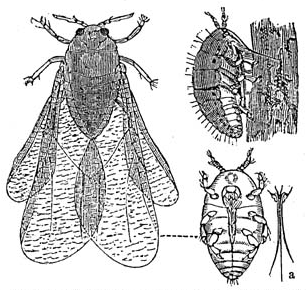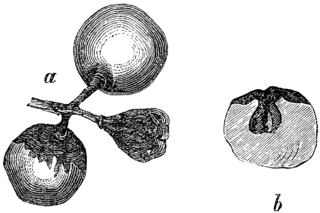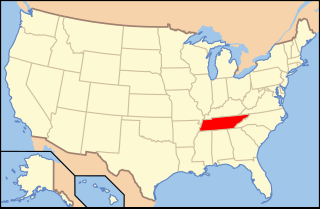
A grape is a fruit, botanically a berry, of the deciduous woody vines of the flowering plant genus Vitis. Grapes are a non-climacteric type of fruit, generally occurring in clusters.

Grape phylloxera is an insect pest of grapevines worldwide, originally native to eastern North America. Grape phylloxera ; originally described in France as Phylloxera vastatrix; equated to the previously described Daktulosphaera vitifoliae, Phylloxera vitifoliae. The insect is commonly just called phylloxera.

Botrytis cinerea is a necrotrophic fungus that affects many plant species, although its most notable hosts may be wine grapes. In viticulture, it is commonly known as "botrytis bunch rot"; in horticulture, it is usually called "grey mould" or "gray mold".

Chambourcin is a variety of grapevine belonging to the Vitis genus in the flowering plant family Vitaceae. It is a French-American interspecific hybrid grape variety used for making wine. Its parentage is uncertain, but genetics studies shows it likely includes several North American Vitis species in its background including: V. berlandieri Planch., V. labrusca L., V. lincecumii Buckley, V. riparia Michx., V. rupestris Scheele, and V. vinifera. The hybrid was produced by Joannes Seyve who often used Seibel hybrids produced in the 1860s. The grape has only been available since 1963; it has a good resistance to fungal disease, and is one of the parents of the new disease resistant variety, Regent, which is increasing in popularity among German grape growers.

Aspergillus niger is a mold classified within the Nigri section of the Aspergillus genus. The Aspergillus genus consists of common molds found throughout the environment within soil and water, on vegetation, in fecal matter, on decomposing matter, and suspended in the air. Species within this genus often grow quickly and can sporulate within a few days of germination. A combination of characteristics unique to A. niger makes the microbe invaluable to the production of many acids, proteins and bioactive compounds. Characteristics including extensive metabolic diversity, high production yield, secretion capability, and the ability to conduct post-translational modifications are responsible for A. niger's robust production of secondary metabolites. A. niger's capability to withstand extremely acidic conditions makes it especially important to the industrial production of citric acid.

Vitis vinifera, the common grape vine, is a species of flowering plant, native to the Mediterranean region, Central Europe, and southwestern Asia, from Morocco and Portugal north to southern Germany and east to northern Iran. There are currently between 5,000 and 10,000 varieties of Vitis vinifera grapes though only a few are of commercial significance for wine and table grape production.

Vitis riparia Michx, with common names riverbank grape or frost grape, is a vine indigenous to North America. As a climbing or trailing vine, it is widely distributed across central and eastern Canada and the central and northeastern parts of the United States, from Quebec to Texas, and eastern Montana to Nova Scotia. There are reports of isolated populations in the northwestern USA, but these are probably naturalized. It is long-lived and capable of reaching into the upper canopy of the tallest trees. It produces dark fruit that are appealing to both birds and people, and has been used extensively in commercial viticulture as grafted rootstock and in hybrid grape breeding programs.

Traminette is a cross of the French American hybrid Joannes Seyve 23.416 and the German Vitis vinifera cultivar Gewürztraminer made by Herb C. Barrett ca. 1965 at the University of Illinois, Urbana/Champaign. His intention was to produce a large clustered table grape with the flavor of Gewürztraminer. He sent the cross to the New York State Agricultural Experiment Station grape breeding program at Cornell for development when he departed from Illinois. Traminette was found to have excellent wine quality, combined with good productivity, partial resistance to several fungal diseases, and cold hardiness superior to its acclaimed parent, Gewürztraminer, while retaining a similar character.

Regent is a dark-skinned inter-specific hybrid grape variety, used for making wine. It has both European and American vine species in its pedigree and a broad resistance against the most significant fungal diseases which affect grapes, such as downy mildew.

Stilbenoids are hydroxylated derivatives of stilbene. They have a C6–C2–C6 structure. In biochemical terms, they belong to the family of phenylpropanoids and share most of their biosynthesis pathway with chalcones. Most stilbenoids are produced by plants, and the only known exception is the antihelminthic and antimicrobial stilbenoid, 2-isopropyl-5-[(E)-2-phenylvinyl]benzene-1,3-diol, biosynthesized by the Gram-negative bacterium Photorhabdus luminescens.

Phomopsis cane and leaf spot occurs wherever grapes are grown. Phomopsis cane and leaf spot is more severe in grape-growing regions characterized by a humid temperate climate through the growing season. Crop losses up to 30% have been reported to be caused by Phomopsis cane and leaf spot.

The Delaware grape is a cultivar derived from the grape species Vitis labrusca or 'Fox grape' which is used for the table and wine production.

Phaeoramularia dissiliens is a fungal plant pathogen which causes cercospora leaf spot on grapes.
Septoria ampelina is a fungal plant pathogen that affects grapes causing septoria leaf spot.

Ulocladium atrum is a fungal saprophyte.

Iowa wine refers to wine manufactured in the U.S. state of Iowa. Iowa presents many challenges to viticulture including very warm summer days that can promote fungal vine diseases, and extremely cold winter nights that can kill many varieties of grapevines. Most commercial viticulture in Iowa focuses on French hybrid and native American grape varieties, with relatively few plantings of Vitis vinifera grapes. Many Iowa wineries also import grapes and juice from other states and countries in order to produce wine varietals otherwise not possible due to Iowa's harsh winter months that will not permit such grapes to survive. Iowa is home to 100 commercial wineries and more than 300 vineyards covering 1,200+ acres. Northeastern Iowa is included in the Upper Mississippi Valley AVA while the western part of the state is in the new AVA designation named Loess Hills.

Tennessee wine refers to wine made from grapes grown in the U.S. state of Tennessee. The state was home to a wine industry in the 19th century that was greatly impacted when Prohibition was introduced in the early 20th century. The modern Tennessee wine industry focuses on French hybrid and native grapes, which are more resistant to the fungal grapevine diseases that thrive in Tennessee's humid climate. Most of the wineries in the state are located in Middle and East Tennessee. A small portion of the Mississippi Delta AVA, a designated American Viticultural Area extends into the southwestern part of the state.

Solaris is a variety of grape used for white wine. It was created in 1975 at the grape breeding institute in Freiburg, Germany by Norbert Becker.
This glossary of viticultural terms list some of terms and definitions involved in growing grapes for use in winemaking.

Wine is a complex mixture of chemical compounds in a hydro-alcoholic solution with a pH around 4. The chemistry of wine and its resultant quality depend on achieving a balance between three aspects of the berries used to make the wine: their sugar content, acidity and the presence of secondary compounds. Vines store sugar in grapes through photosynthesis, and acids break down as grapes ripen. Secondary compounds are also stored in the course of the season. Anthocyanins give grapes a red color and protection against ultraviolet light. Tannins add bitterness and astringency which acts to defend vines against pests and grazing animals.

















